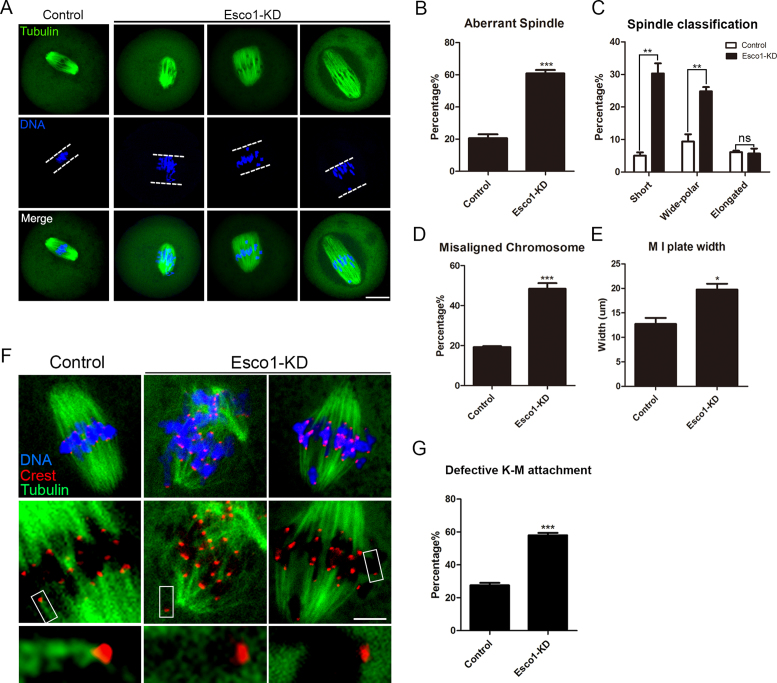Figure 3.
Depletion of Esco1 results in spindle assembly, chromosome alignment and K-M attachment abnormalities during meiotic maturation. (A) Representative images of spindle morphologies and chromosome alignment in control and Esco1-KD oocytes. Oocytes were immunostained with anti-α-tubulin-FITC antibody to visualize spindles and counterstained with Hoechst to visualize chromosomes. Scale bar, 20μm. (B) The rate of aberrant spindles was recorded in control and Esco1-KD oocytes. (C) The rates of short, wide polar and elongated spindles were recorded in control and Esco1-KD oocytes. (D) The rate of misaligned chromosomes was recorded in control and Esco1-KD oocytes. (E) The width of M I plate was measured in control and Esco1-KD oocytes. (F) Representative images of kinetochore–microtubule attachments in control and Esco1-KD oocytes. Oocytes were immunostained with anti-α-tubulin-FITC antibody to visualize spindles, with CREST to visualize kinetochores and counterstained with Hoechst to visualize chromosomes. Scale bar, 5 μm. (G) The rate of defective kinetochore–microtubule attachments was recorded in control and Esco1-KD oocytes. Data of (B), (C), (D), (E) and (G) were presented as mean percentage (mean ± SEM) of at least three independent experiments. *P < 0.05, **P < 0.01, ***P < 0.001.

